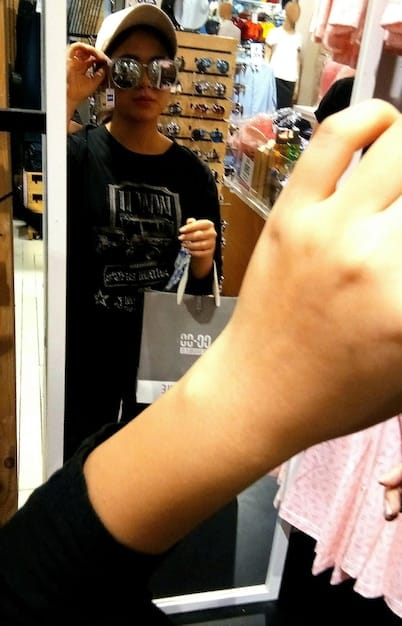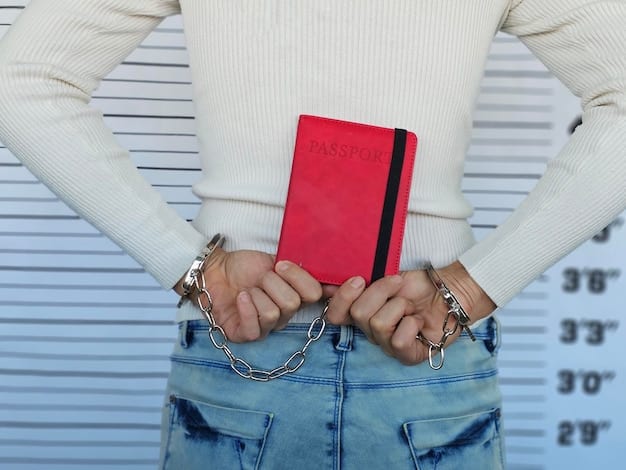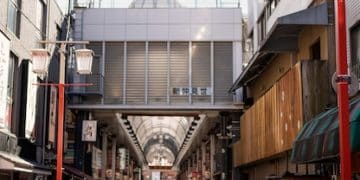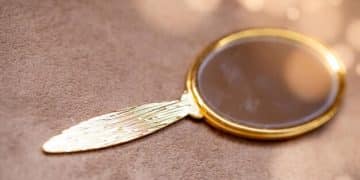US Shopper’s Guide: Avoid Fake Brands in Japan

Navigating Japan’s vibrant shopping scene as a US traveler requires vigilance to distinguish authentic designer goods and local crafts from expertly crafted counterfeits, ensuring your purchases are genuine, ethically sourced, and compliant with import regulations.
For US shoppers, the allure of Japan extends far beyond its exquisite cuisine and breathtaking landscapes; it encompasses a treasure trove of unique products, from cutting-edge electronics to traditional crafts and, of course, luxury brands. However, amidst this shopper’s paradise, a subtle but significant challenge lurks: the presence of counterfeit goods. Understanding how to avoid fake brands in Japan is crucial for any discerning US traveler looking to ensure their purchases are authentic, valuable, and comply with international regulations.
understanding the counterfeit landscape in japan
The perception that Japan is entirely free of counterfeit goods is a common misconception among many international shoppers. While significantly less prevalent than in some other global markets, fake products, particularly high-end luxury items, can occasionally surface. These often appear in less reputable outlets or through online channels that target unsuspecting tourists. The Japanese market prides itself on quality and authenticity, and strong legal frameworks exist to combat piracy. However, the sheer volume of global trade and tourism means that no country is entirely immune to the infiltration of counterfeit items. Understanding the nuances of this landscape is the first step in protecting yourself as a consumer. It’s about being informed, not paranoid, and recognizing that even in a highly regulated market, vigilance remains key. The types of counterfeits range from obvious fakes to highly sophisticated replicas that are difficult to distinguish from genuine articles without expert knowledge.
common types of counterfeit goods
When shopping in Japan, vigilance is important across several product categories where counterfeiting is more likely. While electronics and traditional Japanese crafts are generally safe, luxury items, designer clothing, and certain branded accessories are the most susceptible.
- Luxury Handbags and Accessories: This is arguably the most common category for counterfeits worldwide, and Japan is no exception. Major brands like Louis Vuitton, Chanel, Hermès, and Gucci are prime targets.
- Designer Apparel: High-end clothing, especially items featuring prominent logos or distinctive patterns, can be replicated. This includes jackets, streetwear, and branded t-shirts.
- Watches and Jewelry: Replica watches of famous Swiss or Japanese brands can be incredibly sophisticated, often requiring an expert eye to spot differences.
why counterfeits exist even in japan
The presence of counterfeit items in Japan, despite stringent laws and a culture valuing authenticity, can be attributed to several factors. The global nature of supply chains makes it difficult to completely seal off borders from illicit goods. Furthermore, the high demand for luxury items, coupled with the desire for prestige at a lower price point, creates a fertile ground for the black market. Tourists, particularly those less familiar with local market norms, can sometimes be unwitting targets. It’s important to remember that selling counterfeits in Japan is illegal, and authorities actively work to suppress this trade. However, perfect enforcement is practically impossible. Educating oneself is a far more effective personal defense than relying solely on government oversight.
Navigating the shopping experience in Japan requires a blend of appreciation for its genuine offerings and a healthy skepticism when a deal seems too good to be true. The key is to empower yourself with knowledge and practical tips to ensure your purchases are authentic and you avoid any legal complications upon returning to the US.
identifying red flags: key indicators of fake products
Spotting a counterfeit item often comes down to paying close attention to details that a casual glance might miss. Counterfeiters, despite their best efforts, often cut corners on materials, craftsmanship, and packaging. Being aware of these red flags can save you from a disappointing and potentially costly purchase. It’s not just about the item itself, but also the context in which it’s being sold. A combination of factors, rather than a single indicator, usually points to a product being fake. This requires a keen eye and a willingness to critically assess what you’re buying.
price that’s too good to be true
This is perhaps the most obvious and universal red flag. If a luxury item or a high-demand branded product is being sold at a significantly discounted price—hundreds or even thousands of dollars below its market value—it’s highly likely to be a counterfeit. Genuine luxury items rarely go on deep discount, especially current season collections, unless at authorized outlets or during specific, well-advertised sales. Always be suspicious of prices that seem unbelievably low; there’s usually a reason for such a drastic reduction in price. This applies across categories, from designer bags to electronics.
poor quality and inconsistent details
Genuine brands meticulously control the quality of their products. Counterfeits, even high-quality ones, often betray themselves through subtle flaws.
- Stitching: Look for uneven, loose, or crooked stitching. Authentic items will have precise, uniform stitches.
- Materials: Feel the material. Genuine leather has a distinct smell and texture that counterfeits often fail to replicate accurately. Plastics might feel cheap or brittle.
- Logos and Brand Names: Check for misspellings, incorrect fonts, or distorted logos. Even a slight imperfection can indicate a fake. Authentic logos are always perfectly rendered.
- Hardware: Zippers, clasps, and buckles on genuine items are typically heavy, well-finished, and function smoothly. Counterfeit hardware can feel light, cheap, or tarnish easily.
packaging and documentation discrepancies
The packaging and accompanying documentation are often overlooked but can be tell-tale signs of a fake. Genuine products come in high-quality packaging, often with specific branding elements.

Authenticity cards, dust bags, and instruction manuals should also be scrutinized. Counterfeiters often use lower quality paper or printing processes, resulting in fuzzy text, incorrect colors, or grammatical errors in accompanying documents. Serial numbers and other identifying marks should be present and match the product. If these elements seem off, it’s a major warning sign. Always check if the serial numbers or codes on the product match what’s on the packaging or card.
These indicators, when considered together, provide a robust defense against inadvertently purchasing counterfeit goods. It’s about being an educated consumer and not letting the excitement of a purchase cloud your judgment.
where to shop safely in japan
Knowing where to shop is as important as knowing what to look for when trying to avoid counterfeit goods. Japan offers a wide array of shopping environments, and certain venues are inherently more reliable than others for authentic merchandise. Focusing your shopping efforts on these trusted locations significantly reduces your risk of encountering fake products. This proactive approach ensures peace of mind while enjoying Japan’s unique retail experiences. It’s about choosing reputable sellers who stand behind their products.
authorized retailers and department stores
For designer brands, luxury items, electronics, and high-quality traditional crafts, authorized retailers and major department stores are your safest bet. These establishments have direct relationships with the brands or verifiable supply chains, guaranteeing authenticity.
- Department Stores: Iconic Japanese department stores like Isetan, Mitsukoshi, Takashimaya, and Daimaru are renowned for their impeccable service and genuine products. They carry a vast selection of international luxury brands and high-quality local goods.
- Brand Boutiques: For a specific luxury brand, visit its standalone boutique. These stores are directly operated by the brand and offer the full range of authentic products.
- Official Electronics Retailers: For cameras, gadgets, and other electronics, stick to large chains like Bic Camera, Yodobashi Camera, and Yamada Denki. They sell genuine products with proper warranties.
reputable vintage and second-hand shops
Japan has a thriving market for vintage and second-hand luxury goods, known for its high standards of authentication. Many of these shops meticulously verify the authenticity of their items before sale.
These stores are an excellent option for finding rare or discontinued items, often at more accessible price points than new merchandise. Reputable vintage shops like Daikokuya, Komehyo, and Brand Off are well-known for their rigorous authentication processes. They employ trained experts who can identify fakes. While the prices may still be substantial, they reflect the item’s genuine nature and condition, offering significant savings compared to new without compromising on authenticity. Always choose a well-established shop with a strong reputation.
what to avoid: street vendors and unofficial markets
While tempting for their perceived bargains, street vendors and informal markets are highly risky for purchasing branded goods. These environments are unregulated, and the likelihood of encountering counterfeit items is significantly higher. Prices may seem appealingly low, but the products are almost certainly fake and of poor quality. Similarly, small, independent shops with no clear brand affiliations or official signage should be approached with caution, especially if they advertise significantly discounted luxury items. Online platforms, unless specifically verified as official brand e-commerce sites or reputable second-hand marketplaces, also carry a high risk of counterfeiting. Stick to brick-and-mortar stores with clear legitimacy.
legal implications for us shoppers
Understanding the legal ramifications of purchasing counterfeit goods, both in Japan and upon returning to the United States, is essential for every US shopper. Ignorance of the law is not a defense, and inadvertently buying fake products can lead to significant problems. This goes beyond just losing money on a bad purchase; it can involve legal penalties and the confiscation of your items. The goal is to avoid these complications entirely through informed shopping.
japan’s laws on counterfeiting
Japan has strict laws against the production, distribution, and sale of counterfeit goods. These laws are designed to protect intellectual property rights and maintain the integrity of its market. Merchants caught selling fakes face severe penalties, including hefty fines and imprisonment. While the primary target of enforcement is the seller, buying counterfeit goods, especially in large quantities with intent to resell, can also lead to legal trouble. For tourists, the main risk in Japan itself is simply being defrauded by buying a fake product. However, exporting counterfeit goods is where the legal issues become more pertinent for US travelers.
us customs regulations and penalties
The real legal implications for US shoppers often arise when entering the United States with counterfeit items. US Customs and Border Protection (CBP) takes the importation of fake goods very seriously.
- Confiscation: If CBP agents discover counterfeit items in your luggage, they will be confiscated. You will lose the money spent on these items, as they will not be returned.
- Financial Penalties: Depending on the value and quantity of the counterfeit goods, you could face civil penalties. For personal use, penalties are typically based on the item’s value as if it were genuine. For commercial quantities or intent to resell, penalties can be much higher, potentially reaching tens of thousands of dollars.
- Felony Charges: In severe cases, particularly if there’s evidence of intent to distribute or significant commercial quantities, importing counterfeit goods can lead to felony charges and imprisonment.
- Impact on Future Travel: A record of importing counterfeit goods can flag you for increased scrutiny during future international travel, leading to more frequent and thorough inspections.
personal use vs. commercial use
US customs laws differentiate between items for personal use and those for commercial use (resale). While a single counterfeit handbag for personal use is likely to be confiscated without further penalty, bringing in multiple fake designer watches or a suitcase full of counterfeit electronics could be interpreted as commercial intent, leading to more severe consequences. It’s always best to assume that any counterfeit item, regardless of intent, is subject to seizure and potential penalties. The safest approach is to avoid purchasing counterfeit goods altogether. The risks far outweigh any perceived savings.
steps to take if you suspect a fake purchase
Even with the best intentions and precautions, sometimes a purchase might turn out to be a counterfeit. Discovering you’ve bought a fake can be frustrating, but knowing the appropriate steps to take can mitigate further issues. The response depends on whether you are still in Japan or have already returned to the US. Acting swiftly and appropriately can help protect your rights and potentially recover some losses.
while still in japan
If you realize you’ve purchased a counterfeit item while still in Japan, your options are somewhat limited, especially if you bought it from an unofficial vendor.
- Contact the Seller (if reputable): If you bought the item from a legitimate-looking shop that suddenly seems suspicious, try to contact them for a return or explanation. Be aware that many unofficial sellers might simply deny the claim or be hard to track down.
- Report to Authorities: For significant purchases or if you suspect a large-scale counterfeiting operation, you can report the incident to the local police (Koban) or consumer protection agencies. They may not be able to recover your money directly but can investigate the seller.
- Gather Evidence: Keep all receipts, packaging, and any communication with the seller. Take photos of the item and any signs of its fraudulent nature. This evidence will be crucial if you pursue further action.
after returning to the us
Once you’ve returned to the US, the situation becomes more challenging. Your primary concern will be dealing with the item and potentially preventing it from being seized by customs if it wasn’t caught upon entry.

It is against US law to import counterfeit goods, even for personal use. If you realize an item you brought back is counterfeit and it wasn’t seized at customs, it’s generally advised not to try to return it to the store in Japan or resell it, as this could put you in further legal jeopardy. The best, albeit unfortunate, approach is often to simply dispose of the item. Trying to resell a known counterfeit is illegal and can lead to severe penalties if discovered. Some credit card companies offer purchase protection that might cover fraudulent purchases, though this often requires substantial proof and might not apply to internationally purchased items under all circumstances. Always check your credit card’s policy.
The best strategy is prevention. By being informed and adhering to safe shopping practices, you can avoid the headache and financial loss associated with counterfeit goods.
tips for smart shopping in japan
Beyond simply avoiding fakes, smart shopping in Japan involves navigating cultural nuances, understanding taxation, and making the most of your purchasing power. These tips ensure a positive and authentic shopping experience, allowing you to bring home genuine memories and products. It’s about being an educated consumer who respects local customs and leverages available benefits.
know your brands and their official stores
Before you travel, familiarize yourself with the brands you intend to purchase and where their official stores are located in Japan. Most major international brands have dedicated boutiques in prime shopping districts (e.g., Ginza in Tokyo, Shinsaibashi in Osaka). Check their official websites for store locators. For Japanese brands, research their flagship stores or large authorized retailers. This pre-trip research is invaluable in guiding you to legitimate sources and saving time when you’re there. Knowing what an authentic product looks like and feels like from official images or past experience also provides a crucial benchmark.
take advantage of tax-free shopping
Many stores in Japan offer tax-free shopping for tourists on purchases above a certain amount (currently ¥5,000 for general goods and ¥5,000 for consumables, though rules can change). Look for “Tax-Free” signs at store entrances. When eligible, you’ll need to present your passport with a valid tourist visa stamp. The store will process the tax exemption, often sealing the items in special bags. This is a legitimate way to save money and is only offered by authorized retailers, serving as another implicit sign of legitimacy. Keeping track of your receipts for tax-free purchases is important.
be mindful of customs declarations
When returning to the US, remember to declare all your purchases to US Customs and Border Protection. US citizens are allowed a certain exemption amount (currently $800 per person) for goods brought back from abroad without incurring customs duty. Any amount exceeding this is subject to duty fees. While it might be tempting to under-declare, lying on a customs declaration is illegal and can lead to severe penalties, including fines and confiscation of goods. Be honest and prepared to pay any applicable duties; it’s a small price to pay for a hassle-free re-entry and compliance with the law.
These smart shopping practices ensure that your Japanese retail adventures are not only enjoyable but also free from legal complications and the disappointment of counterfeit goods. By being prepared, you can fully embrace the quality and authenticity that Japan’s shopping scene truly offers.
ethical considerations and supporting authentic creators
Beyond the purely practical and legal aspects of avoiding counterfeit goods, there’s a significant ethical dimension. When you purchase fake products, you are inadvertently supporting illegal operations that undermine legitimate businesses, exploit labor, and often fund organized crime. Conversely, by consciously choosing to buy authentic items, you not only ensure quality and value for yourself but also support ethical practices, original creators, and honest businesses. This is about making responsible consumer choices that have a positive ripple effect.
the true cost of counterfeits
The allure of a cheap price for a luxury item often masks a darker reality. The counterfeit industry is not victimless.
- Loss for Legitimate Businesses: Counterfeiting directly impacts the revenue and reputation of genuine brands, stifling innovation and leading to job losses in legitimate industries.
- Unsafe Products: Counterfiet goods often do not meet safety or quality standards. This can be particularly dangerous for electronics, toys, or cosmetics, which may contain hazardous materials or malfunction dangerously.
- Exploitative Labor Practices: Many counterfeit operations are linked to unethical labor practices, including child labor and sweatshops, operating outside of any regulatory oversight.
- Funding Organized Crime: The profits from counterfeit goods often funnel into organized crime, including drug trafficking, human trafficking, and terrorism, making it a significant global problem.
supporting japanese artisans and innovation
Japan is a country deeply rooted in tradition and meticulous craftsmanship, but also a leader in technological innovation. When you buy authentic Japanese crafts, unique fashion items, or cutting-edge electronics from reputable sources, you are directly supporting the artisans, designers, and engineers who dedicate their lives to creating high-quality, distinctive products.
This support helps preserve traditional skills, encourages technological advancements, and strengthens the Japanese economy in a legitimate way. It ensures that the unique cultural heritage and innovative spirit of Japan continue to thrive. Choosing authenticity means you’re investing in true craftsmanship and originality, rather than contributing to an illicit market. Your purchases become a testament to quality and ethical consumerism, bringing genuine value and memories back to the US. Embracing this mindset transforms shopping from a mere transaction into a meaningful act of support for creators and legitimate industries.
| Key Point | Brief Description |
|---|---|
| 🕵️♂️ Spotting Fakes | Look for unusually low prices, poor stitching, misaligned logos, and cheap packaging on luxury goods. |
| 🛍️ Safe Shopping Spots | Prioritize official brand boutiques, major Japanese department stores (e.g., Isetan), and reputable electronics chains. |
| ⚖️ Legal Risks | Importing counterfeits into the US can lead to confiscation, fines, and even felony charges, regardless of intent for personal use. |
| 🌱 Ethical Shopping | Support legitimate businesses and artisans by choosing authentic products, avoiding the unethical practices behind counterfeiting. |
frequently asked questions about avoiding fake brands in japan
While Japan has strong anti-counterfeiting laws and a culture of quality, counterfeits, especially luxury goods, can occasionally be found. They are less pervasive than in some other countries but still exist, primarily through less reputable channels or informal vendors. Shoppers, particularly tourists, should remain vigilant.
Legally, the primary focus in Japan is on those who produce and sell counterfeit goods. As a tourist, you’re not likely to face legal charges for an unwitting purchase. However, the real risk comes upon re-entering the US, where importing counterfeit items is illegal and can lead to confiscation and penalties.
The best way is to only buy from authorized retailers, official brand boutiques, and major department stores. For second-hand luxury, choose reputable vintage stores known for their authentication expertise. Be suspicious of street vendors or abnormally low prices, which are immediate red flags.
If US Customs and Border Protection identifies a counterfeit item, it will be seized. You will lose the item and any money spent on it. Depending on the value and quantity, you could also face fines. It’s also illegal to resell a known counterfeit item in the US.
Generally, yes. Tax-free status is granted by the Japanese government to official businesses, meaning they operate legitimately. This indicates a higher likelihood of selling authentic goods than unverified sellers. It’s a good indicator, but still combine it with other red flag checks.
conclusion
Navigating the vibrant and diverse shopping landscape of Japan as a US traveler is an exciting endeavor that promises unique finds and cherished memories. While the country is globally recognized for its commitment to quality and authenticity, the presence of counterfeit goods, particularly in the luxury market, remains a subtle undercurrent. By adopting an informed approach, being aware of common red flags, and strategically choosing reputable shopping venues, you can significantly mitigate the risk of encountering fake products. Understanding the legal implications upon re-entry to the US further underscores the importance of diligent shopping practices. Ultimately, ensuring your purchases are genuine not only protects your financial investment but also aligns with ethical consumerism, supporting the legitimate creators and businesses that make Japan’s economy thrive. Your journey to avoiding fake brands in Japan truly begins with knowledge and vigilance, transforming your shopping experience into one of genuine delight and satisfaction.





